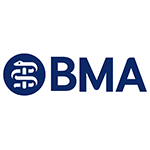Understanding Tennis Elbow (Lateral Epicondylitis)
What is it?
Tennis elbow is a condition in when you have discomfort on the outer aspect of the elbow, usually in people between 40-60 years old. It’s a common condition and not something to worry too much about. It happens because of changes in the tendons as you get older. It particularly affects the origin of one of extensor tendons on the outside of the elbow that moves your wrist (the Extensor Carpi Radialis Brevis tendon).
What causes Tennis Elbow?
As you grow older, the point at which tendons connect to your bones change. This is called enthesopathy. It’s part of getting older and isn’t a harmful problem. Tennis elbow usually happens when you use your arm a lot, like with repetitive arm movements or after a bump to the elbow
What are the symptoms?
If you have tennis elbow, you will usually experience:
- pain on the outside of your upper forearm, just below your elbow
- pain when lifting or bending your arm
- pain when writing or gripping small objects
- pain when twisting your forearm
- pain and stiffness when fully extending your arm
How is it diagnosed?
Most times, doctors can tell by talking to you and checking your arm. They might do an X-ray, but it usually looks normal.
What is the natural history?
Tennis elbow usually gets better on its own, but it might take 6 months to 2 years. 90% of people recover within a year.
What is the treatment?
Tennis elbow is a self-limiting and harmless condition that will settle on its own. The vast majority of patients do not require any intervention.
- Simple measures: Avoiding heavy use of the arm or hand will usually result in less pain. It is safe to use your arm normally
- Painkillers and Anti-inflammatories: Some medicines might help, but they can have side effects. It’s best not to use them too much
- Physiotherapy: A therapist might help by offering exercises and massage techniques
- Splints and braces (orthoses): These may help, probably by applying pressure to the elbow.
- Steroid injections: They can relieve pain but might not be good for your tendons in the long run and may actually prolong the course of the condition. Current best evidence does not support the use of steroids for tennis elbow.
- Shockwave therapy: This is not proven be to very helpful.
- Platelet rich plasma (PRP) injections: The long-term effectiveness is not yet known.
- Surgery: Surgery is again controversial and is associated with risks.






















